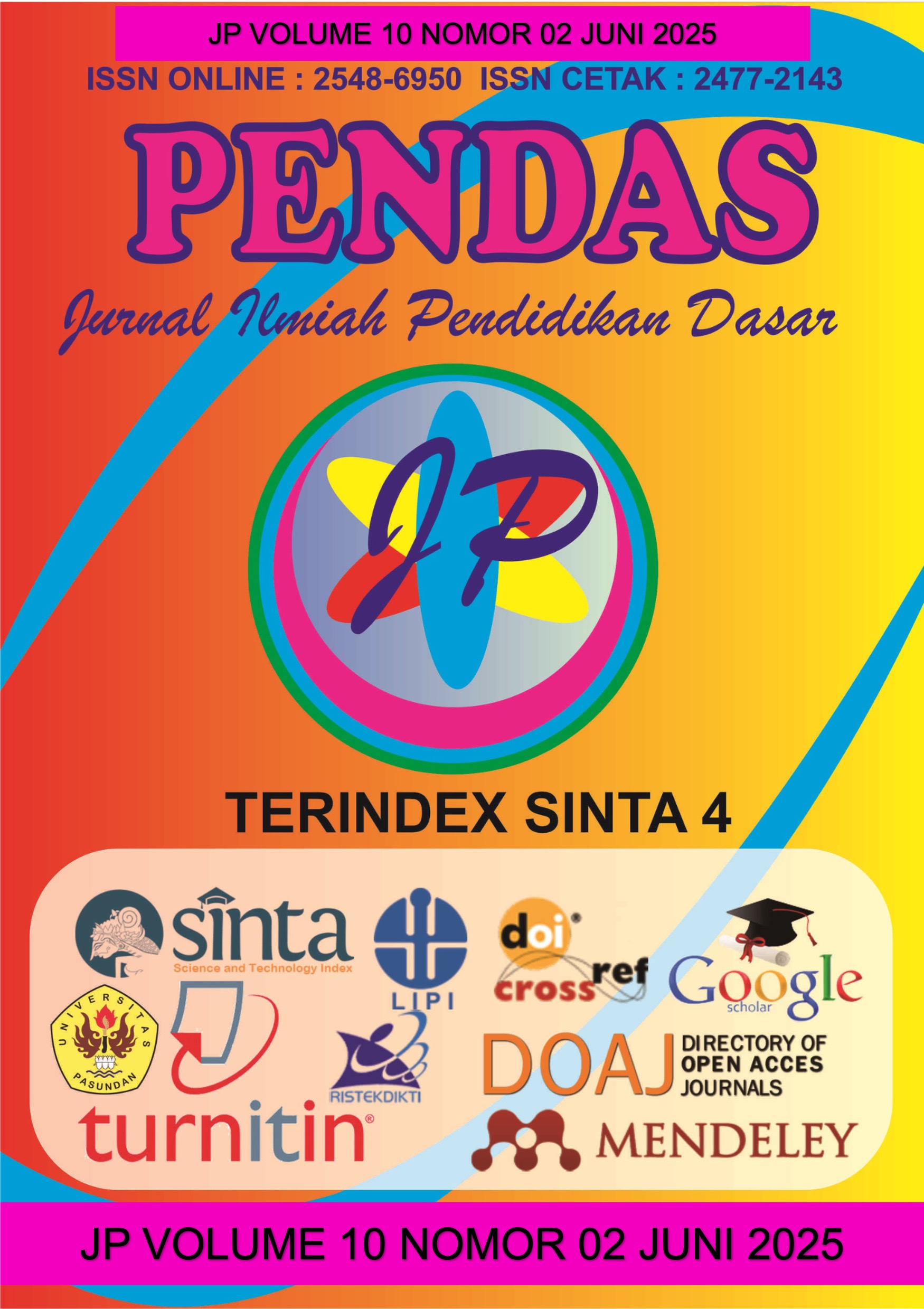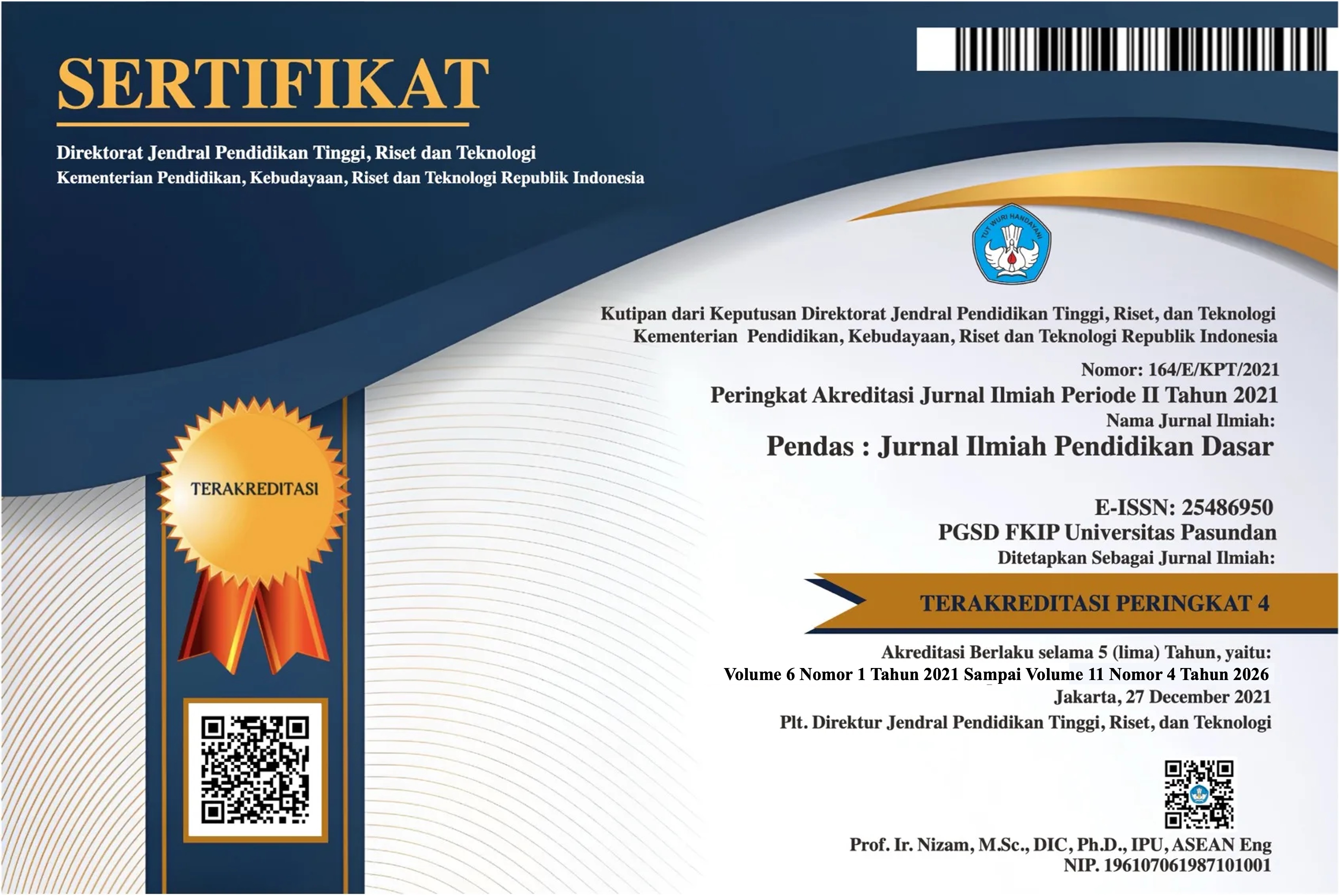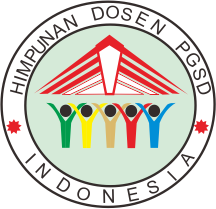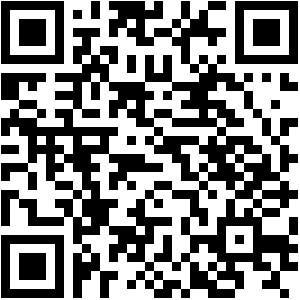IMPLEMENTASI TEKNOLOGI DIGITAL MELALUI APLIKASI CANVA DALAM MENINGKATKAN MOTIVASI BELAJAR IPAS SISWA SDN 61 KARARA KOTA BIMA
DOI:
https://doi.org/10.23969/jp.v10i02.23972Keywords:
digital technology, motivation to learnAbstract
The increasingly rapid development of information technology in the current era of globalization cannot be avoided anymore its influence on the world of education. Global demands require the world of education to always adapt technological developments of efforts to improve the quality of education. This study aims to determine the efferctiveness of the use of digital technology through the canva application in increasing the motivation to learn science in fifth grade students of SDN 61 Karara Bima City. This research is a classroom action research of the classroom assessment. The instruments used to collect data are observation sheets for the implementation of learning (teacher activities), observation sheets for student activities, student response questionnaires, and learning outcome tests in each cycle. The data obtained were analyzed using quantitative descriptive analysis is used to determine student learning outcomes while qualitative analysis is used to deremine the results od student activity observations. The results of the study showed that learning using digital technology based media through the canva application can increase the learning motivation of fifth grade students of state elementary school 61 Karara Bima City. This can be seen from the fifth grade students of state elementary school 61 Karara Bima City in cycle one of 63,64 % and in cycle two the average student leraning outcomes increased to 90,90 %. Students activity in the learning process also increased, although based on the students activity sheet in cycle one several obstacles were still felt cycle two showet significant improvement.
Downloads
References
Adiati, C. (2023). EFEKTIVITAS VIDEO ANIMASI TERHADAP HASIL Cornellia pembelajaran serta terdiri dari sumber belajar , siswa serta guru . Belajar Memiliki pemahaman yang menyeluruh tentang konsep dan aplikasi mengembangkan bahan ajar . Siswa harus terlibat dalam berpikir ho. 69–81.
Cahyono, B. T., Prihatin, R., Sukmawati, F., & Santosa, E. B. (2023). Mengukur Kemampuan Pembelajaran Melalui Penggunaan Media Video Animasi. November, 2555–2566. https://doi.org/10.30868/ei.v12i04.5008
Fuaddudin, F. (2020). Perubahan Paradigma Mengajar Guru Dalam Menyongsong Penyelenggaraan Pendidikan Di Era Revolusi Industri 4.0. EL-Muhbib: Jurnal Pemikiran Dan Penelitian Pendidikan Dasar, 4(1), 68–81. https://doi.org/10.52266/el-muhbib.v4i1.478
Lailan, A. (2024). Peran Teknologi Pendidikan Dalam Pembelajaran. SENTRI: Jurnal Riset Ilmiah, 3(7), 3257–3262. https://doi.org/10.55681/sentri.v3i7.3115
Maritsa, A., Hanifah Salsabila, U., Wafiq, M., Rahma Anindya, P., & Azhar Ma’shum, M. (2021). Pengaruh Teknologi Dalam Dunia Pendidikan. Al-Mutharahah: Jurnal Penelitian Dan Kajian Sosial Keagamaan, 18(2), 91–100. https://doi.org/10.46781/al-mutharahah.v18i2.303
Matematika, J. P., Penerapan, A., Video, M., & Menggunakan, P. (2022). Jurnal Pendidikan Matematika. 1(2), 47–56.
Rukmana, A. Y., & Wirawan, R. (2023). Penggunaan Teknologi dalam Pendidikan : Analisis Literatur Mengenai Efektivitas dan Implementasi. 01(07).
Sarnoto, A. Z., Hidayat, R., Hakim, L., Alhan, K., Sari, W. D., & Ika, I. (2023). Analisis Penerapan Teknologi dalam Pembelajaran dan Dampaknya terhadap Hasil Belajar. Journal on Education, 6(1), 82–92. https://doi.org/10.31004/joe.v6i1.2915
Downloads
Published
Issue
Section
License
Copyright (c) 2025 Pendas : Jurnal Ilmiah Pendidikan Dasar

This work is licensed under a Creative Commons Attribution 4.0 International License.



















